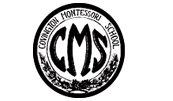
Covington Montessori School
Covington Montessori School is a state certified Montessori school located in the heart of downtown Covington, Louisiana. CMS was established in 1982 by Dr. Nancy Carter, a local board certified pediatrician. At CMS we are dedicated to providing an authentic Montessori toddler, preschool and kindergarten experience.
Why Montessori?
Montessori education is centered around the idea that every child is a unique individual with an innate desire to explore the world around them. Our classrooms are carefully designed to create an environment that supports independent learning and encourages self-driven exploration. Through hands-on activities, children engage in purposeful work, developing important life skills such as concentration, coordination, and decision-making abilities. From practical life activities to math, language, and cultural studies, our students are immersed in a rich and stimulating environment where they can freely follow their interests and develop a deep understanding of the world.
At Covington Montessori School, we believe that education is a lifelong journey. By providing a Montessori education, we are not just preparing our students for success in traditional academics, but also equipping them with essential life skills, a love for learning, and the confidence to explore and contribute to the world around them. Come and experience the transformative power of Montessori education at our school today!
Our Programs:
Two’s Program
24-36 months
1 classroom
Preschool Program
3 years old
1 classroom
Primary Program
3-6 years old
1 multi-age classroom
Contact Us
Have a question or want to know more about Montessori? Get in touch today—we're excited to assist you with your child’s educational journey.





